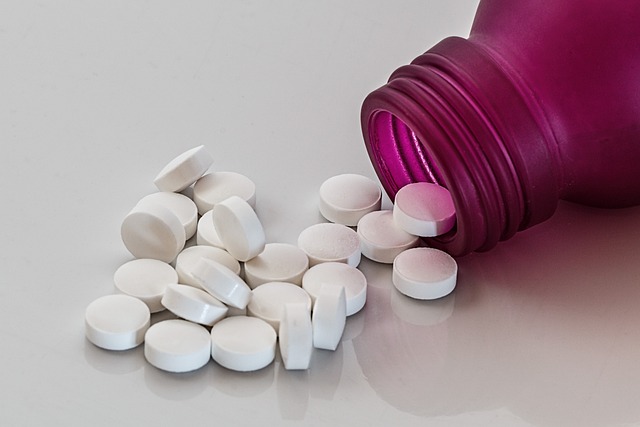By EMMA TUFO
Fatal overdoses in Maryland continued their downward trajectory, dropping 3% in 2023 to 2,503, according to data from the Maryland Office of Overdose Response. This trend is in contrast to the surge in the United States, which topped 112,000 overdoses in 12 months for the first time, according to new provisional data from the Centers for Disease Control and Prevention (CDC).
The pandemic era of 2020 and 2021 saw an escalation in overdose deaths, both in Maryland and the United States. While the United States grapples with escalating rates, Maryland overdoses have declined 11% since then.
“Seven people a day are still dying from fatal overdoses in Maryland and that is very high. But, we’ve made some progress,” said the Director of Communications at the Maryland Office of Overdose Response, Michael Coury.Overdoses in the United States rose roughly 72% from 2020 to 2023, according to the CDC. The increase from approximately 65,000 deaths in a year to what policymakers fear is a new standard of over 110,000, according to NPR.
Studies and experts initially linked the surge in overdoses to the COVID-19 pandemic, but since then, national numbers have risen to six-figures, mainly due to the increase of illicitly manufactured fentanyl in the drug market.
The primary contributor to the majority of overdose deaths involves some form of opioids, including heroin, prescription painkillers, and, more prominently in recent years, fentanyl.
Fentanyl is a synthetic opioid that’s often mixed into other drugs like heroin, cocaine, crack and pills before purchase to increase the potency of the drug and because of its cheap production.
The first wave of the opioid epidemic began in 1990, following the increased prescribing of opioids to patients by doctors, according to the CDC. In 2010, the second wave began, as the increased use of heroin led to mass numbers of overdose deaths. The third wave started in 2013 when illicitly manufactured fentanyl began to increasingly be distributed across the country and sold on the illegal drug market, according to the United States Drug Enforcement Administration (DEA).
In Maryland, fentanyl is implicated in the highest number of overdose deaths.
“Fentanyl is still, by and large, the driver of overdose mortality,” as noted by Coury.In 2023, 87 percent of the over 2,500 overdose deaths in Maryland were in combination with the deadly drug. Despite its lethal potency, fentanyl’s presence cannot be detected by sight, taste, or smell; it’s invisible. It can be sold as powders and nasal sprays and is increasingly being pressed into pills made to look like legitimate prescription opioids.
There is no quality control, and these counterfeit pills often contain lethal doses of fentanyl, according to the DEA. When combined with other substances like cocaine and heroin, fentanyl exerts a devastating effect, often without individuals realizing they are consuming it.
Cocaine-related fatal overdoses experienced an annual increase of 21% in 2023, according to the Maryland Office of Overdose Response dashboard. Cocaine was involved in nearly half of all overdoses in Maryland. Experts and annual state reports attribute the rise in cocaine-related deaths primarily to opioids rather than to cocaine use alone.In contrast, overdoses involving heroin have been steadily declining in Maryland. In 2023, the number of heroin-related fatalities decreased to 121, a 78% drop from 2020. Deaths from heroin increased rapidly beginning around 2011 and were responsible for the highest national overdose death rates in 2015, according to the State Health Access Data Assistance Center (SHADAC).
In July 2013, an ongoing epidemic of illicit fentanyl overdose deaths started in Maryland, according to a study published in the journal Academic Forensic Pathology. Heroin’s decline in opioid-related overdoses echoes fentanyl’s takeover.In Maryland, overdose deaths among people aged 55 and older have been rapidly rising since 2016, hitting 873 in 2023.
While Maryland’s overdose rates are decreasing, the state continues to take proactive steps in addressing the crisis. In December 2023, Governor Wes Moore announced the establishment of Maryland’s Office of Overdose Response within the Maryland Department of Health, aiming to coordinate and promote efforts across state agencies to combat the overdose crisis.
Governor Moore emphasized Maryland’s commitment to addressing the opioid crisis as a public health issue and setting an example for other states to follow.
At the national level, policy changes allowing the over-the-counter sale of naloxone, a medication that can reverse most opioid overdoses, have been implemented, aiming to provide easier access to life-saving interventions.
Locally, the Anne Arundel County Department of Health installed seven vending machines in Maryland stocked with free naloxone to encourage more individuals to carry this life-saving medication.
“Moral of the story, we still have a lot of work to do. The opioid crisis is still very much with us. We’re losing over 100,00 people a year at the national level and that is still a crisis,” Coury said





Recent Comments